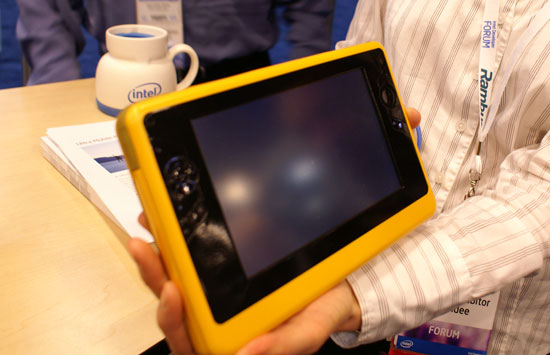
Original Link: https://www.anandtech.com/show/1965
Spring IDF 2006: Merom and Ultra Mobile PCs
by Anand Lal Shimpi on March 7, 2006 10:58 PM EST- Posted in
- Trade Shows
Never in the history of IDF has Intel disclosed so much on the first day of the show. A couple of years back Intel shortened IDF from a four day event to a three day event, which made things a little more hectic but it also made the show more efficient. This time however, Intel not only kept the three day schedule but also crammed all four keynotes into the first day. Combine the four keynotes with our hands on time with Conroe and you can see how it was a busy day.
The first two keynotes of the day focused on the desktop and the server markets, while the latter half of the day was focused on mobile. There are two main things to discuss when it comes to mobile technology at this Spring IDF: Merom and the Ultra Mobile PC (UMPC).
Merom, as we all know by now, is the successor to Yonah (Core Duo). It is very similar to Conroe in terms of its architecture but will be shipping at lower clock speeds and lower thermal/power targets.
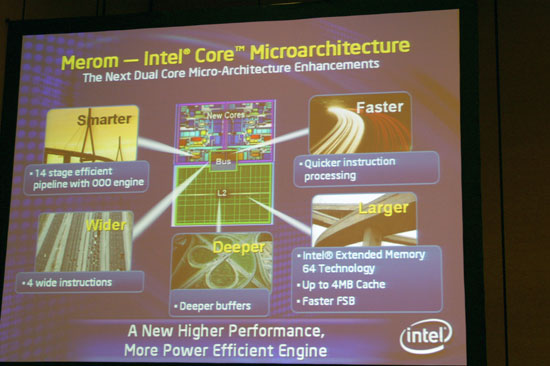
We'll dive into the architecture of Merom tomorrow, but until then here's what we do know. Merom, like Conroe, features a 14-stage integer pipeline, up from the 12-stages in Yonah. Merom also happens to be a wider 4-issue core, meaning it can fetch, decode, execute and retire up to four instructions per clock (compared to 3 in Yonah).
We mentioned earlier today that Intel's new Core micro-architecture would support the fusion of x86 instructions as well as micro-ops, which should increase the efficiency of the CPU as well as help to reduce power.
What hasn't been talked about too much is Merom's 4MB on-die L2 cache. Merom's cache, like Yonah's, is entirely shared between the two cores and can be dynamically resized to suit the needs of each individual core. The increase in L2 cache size from Yonah's 2MB now explains why Yonah had a higher L2 access latency (14-cycles) compared to its predecessors; the higher latency L2 is actually because Yonah makes use of Merom's cache, it simply is a 2MB version of it.
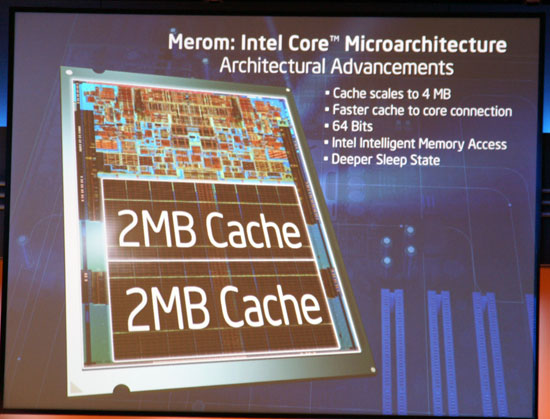
Merom will make its debut in the second half of this year on a platform Intel is referring to as the Napa Refresh. The new platform is essentially Napa, but with a Merom processor instead of Yonah. The other beauty of Merom is that it is 100% compatible with existing Yonah designs, meaning that all Core Duo notebooks today should be able to accept a Merom processor with at most a BIOS update.
2006 - 2007 Mobile Platform Roadmap
Note that Merom will operate in the very same power envelope as Yonah does, meaning that power consumption will stay constant while performance goes up. This also makes it easier for OEMs to simply start shipping their existing Core Duo designs with Merom instead of Yonah, avoiding a lengthy and costly ramp up of Merom just months after Yonah really started shipping in volume.
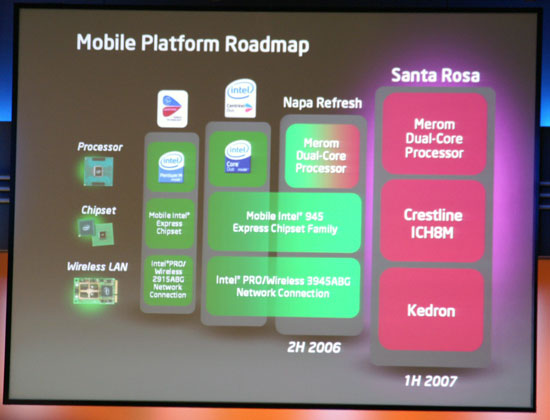
In 2007 Intel will replace Napa with the Santa Rosa platform, also featuring Merom but with a new chipset (Crestline and ICH8M) as well as a new wireless solution called Kedron. Merom will be given a faster FSB on the Santa Rosa platform (most likely 800MHz or 1066MHz), but will otherwise remain unchanged from what launches later this year.
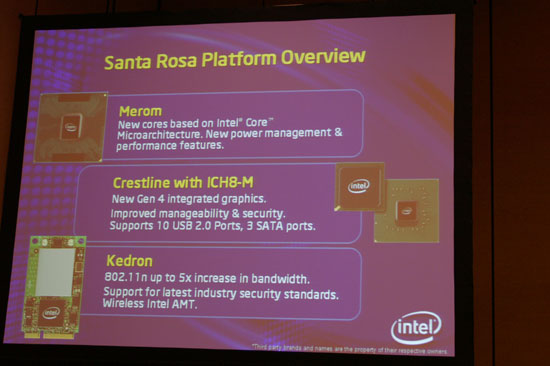
The Crestline chipset will include the next generation of Intel's integrated graphics. The new ICH8M will feature 10 USB 2.0 ports and 3 SATA ports. On the wireless side, Kedron will support 802.11n as well as 802.11b/g.
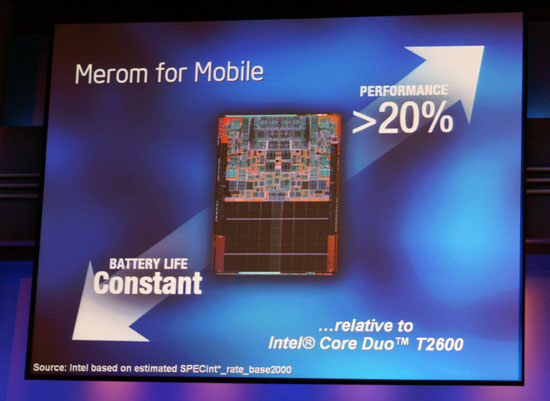
Earlier today Justin Rattner mentioned that Merom platforms would offer more than a 20% increase in performance relative to the current Core Duo T2600 (2.16GHz) processors with no impact on power consumption. During a separate briefing, Intel's Mooly Eden showed a benchmark pitting a Dell Core Duo system against the same system with a Merom processor (Eden literally swapped out the Core Duo CPU and stuck in a Merom processor, partly to showcase its backwards comptability). The benchmark was a custom Quake 4 timedemo, with the Core Duo system scoring 106.6 fps while the Merom system scored 134 fps: advantage Merom by just over 25%. We don't know any of the specifics of the settings on the systems, other than they were claimed to be identical. Given the results we've seen with Conroe on the desktop, this sort of a performance increase does not seem out of the ordinary.
2006 Concept Notebooks
Intel also showcased some concept mobile PC designs, some of which may find their way to the market eventually paired with a Merom processor.
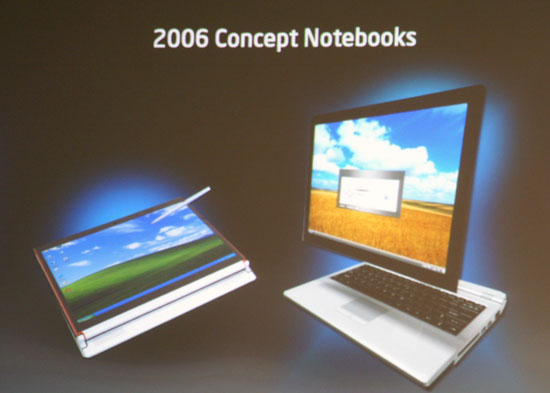
The concept seen below features a detachable tablet/notebook as its display, simply lift the screen up and you've got a Tablet PC you can use as a tablet or a notebook.
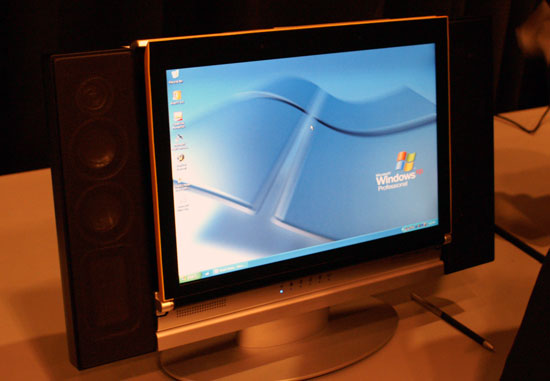
Quite possibly the most interesting concept was this one (pictured below), which featured a screen that could tilt and pivot apart from the base of the notebook. Mooly demonstrated its usefulness when flying in cramped economy class seating and the person in front of you decides to lean back. You can reorient the display in a number of ways to help deal with such tight quarters.
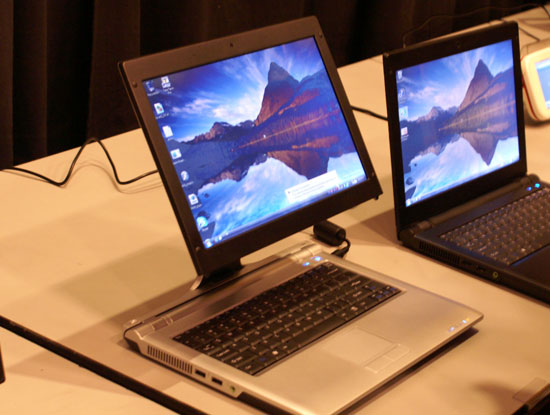

Although no manufacturers were mentioned, Eden did say that a number of OEMs were actively looking into this design.
NAND Flash to Reduce Application Load Times
During Sean Maloney's mobility keynote, another element of the Santa Rosa platform was demonstrated - a technology called Robson. Robson combines NAND flash with some caching algorithms to help speed up system boot time and application startup time. Basically data gets prefetched and cached into some local NAND flash, which makes accessing it a lot faster (and lower power) than going to a slow, mechanical hard disk.
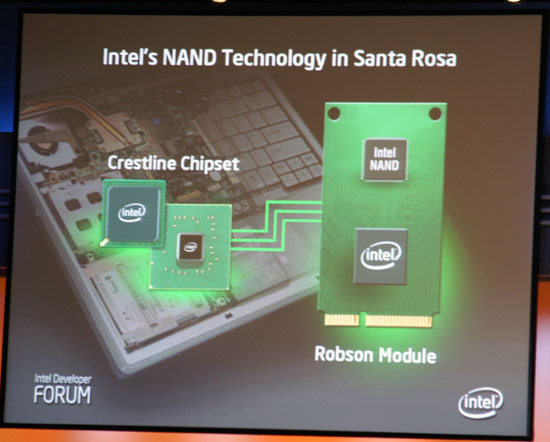
The results were quite visible, Intel ran through a benchmark of simply opening and executing macros on Microsoft Office documents. The benchmark completed in 3.3 seconds on the Santa Rosa platform equipped with Robson technology, while it took 15 seconds on the same platform without Robson.
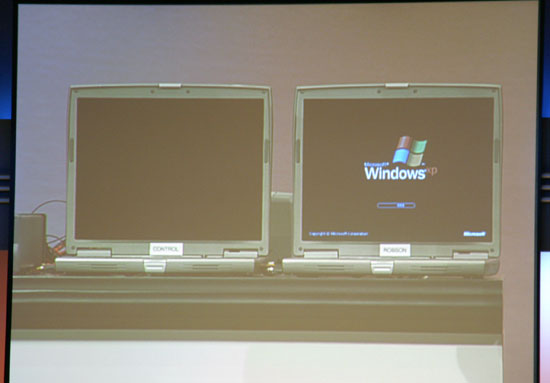
Robson in action, the notebook on the left is booting faster thanks to it
The reduction in power consumption was also measurable, going from 2.7W down to 2.0W thanks to Robson technology. System boot time was also reduced, although we didn't measure how much it was reduced.
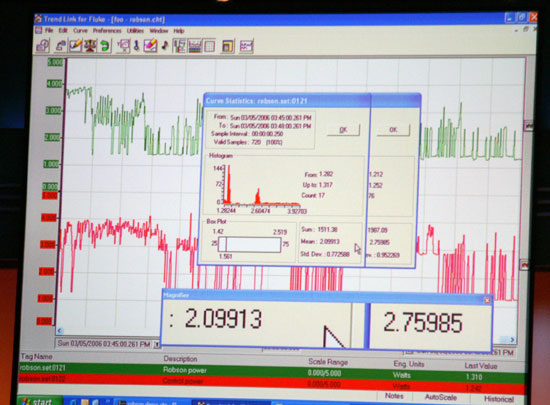
WiMAX
Intel also reaffirmed their support for WiMAX by highlighting that they would be shipping WiMAX capable PC Cards by the end of this year, and that they had also developed a WiMAX/WiFi radio that should be able to work all over the world once WiMAX is enabled globally.
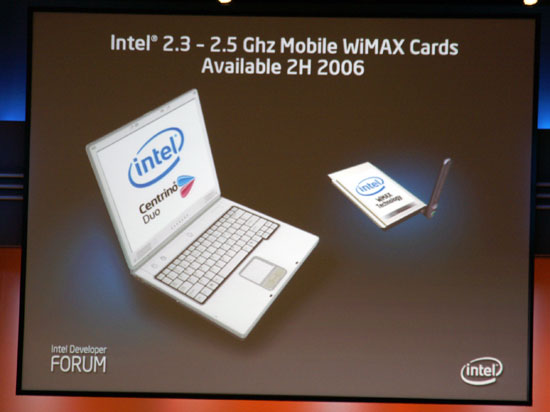
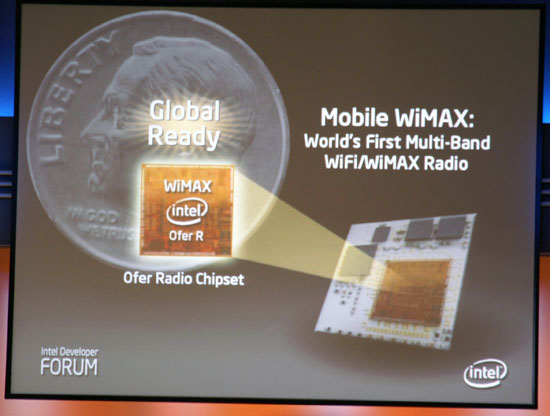
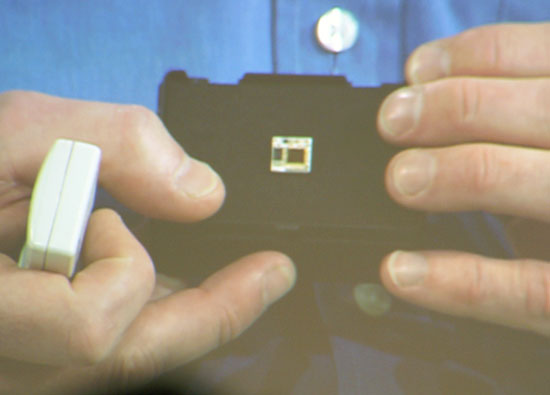
The Ultra Mobile PC
Known to some as Microsoft's Origami project, the Ultra Mobile PC (UMPC) is actually far from a new concept; Intel first talked about it at last year's Fall IDF calling it the Handtop PC and saying that Intel would be making processors for it in the 5W - 0.5W power range.
Six months later, there now are working prototypes as well as a commitment to see the first devices shipping this quarter (given that this quarter is almost over, we'd expect to hear some announcements soon).
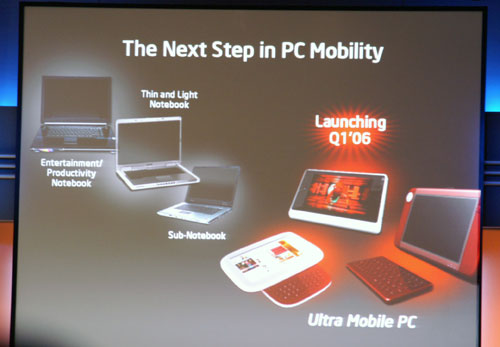
The idea behind the UMPC is pretty simple; it's a device that offers more portability than a notebook, but more power than a PDA or Smart Phone. Intel and Microsoft seem to think that there's a big market for a device like this, and honestly we do too, however we also believe that the ergonomics of the device and the interfaces (both human and GUI) must be perfect in order for it to succeed. If they aren't done well, we could be looking at a smaller version of the failed Tablet PC.
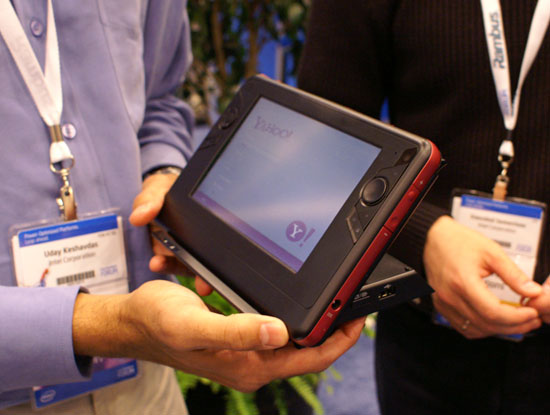
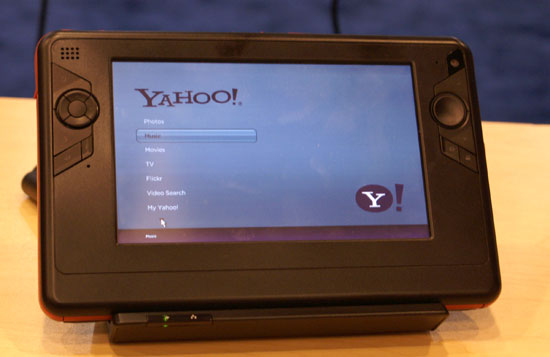
All of the UMPC prototypes shown off at IDF use a non-productized Ultra Low Voltage Pentium M processor, most likely running at significantly lower clock speeds than anything that's available for retail sale in order to fit in that sub-5W power envelope. The devices that we saw supposedly featured an internal 1.8" hard drive varying in capacity, but going up to 30GB.
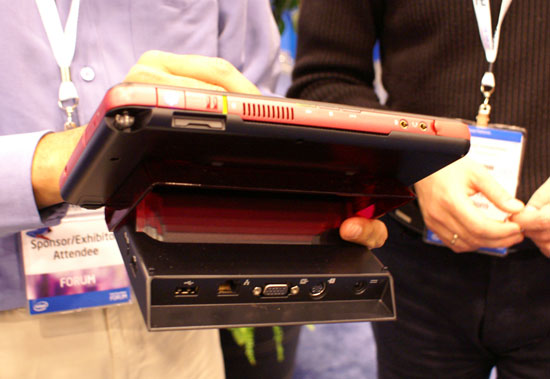
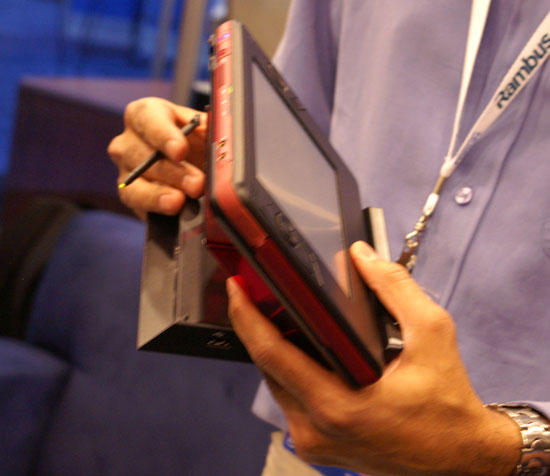
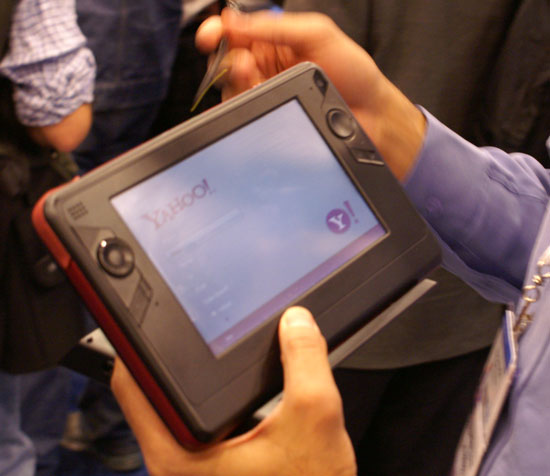
The target screen size for these UMPCs is in the 5" - 6" range, with some devices going larger and others going smaller. Despite the small screen size, the displays are relatively high resolution, the one we played with featured an 800 x 600 native resolution. Unfortunately, since it was running Windows XP (and not Vista or OS X) the fonts on such a small/high resolution display were virtually unreadable. On the more portable prototypes you'd have to really concentrate to hit any of the Windows menus with the bundled stylus and reading text on it got tiring very quickly.

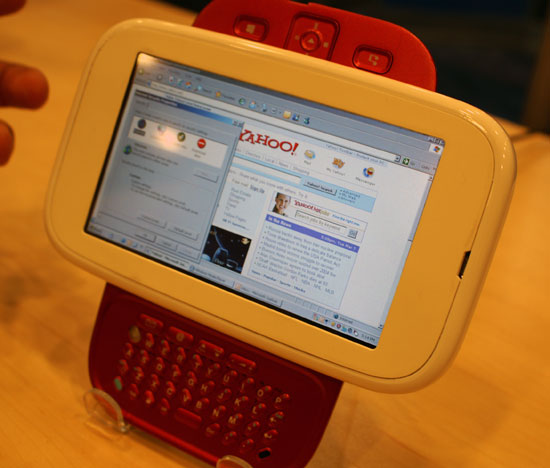
The initial prototypes were all around 450 - 600 grams, or around 1 - 1.32 pounds. Their weight was pretty decent, but the thickness and overall dimensions of the devices prevented them from being tossed into a pocket like you would a Smart Phone or PDA even.
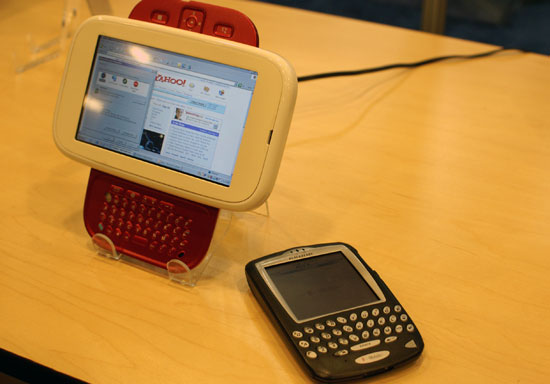
The shortcomings aside, we do believe that there is potential here; PDAs were not functional enough, they lacked the screen size, processing power and input devices to really be widely used. Tablet PCs had all of that, but lacked in the portability and ergonomics departments. The Ultra Mobile PC has the potential to provide users with a welcome medium, let's just hope someone does it right.
